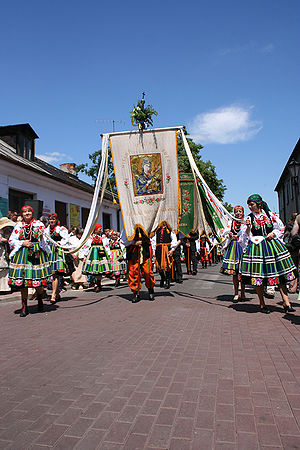
Catholicism is centered around a sacred calendar, which means there is a notion of sacred time. Indeed, the whole reason I’m attempting to write daily about something positive in Catholicism is due to our being in the midst of Lent, one of several periods of the year that are juxtaposed to “ordinary time.” Additionally, sprinkled among the various holy and ordinary times are saints’ days and holy days, serving as temporal mile markers throughout the year.
Yet like many things in Catholicism, it’s not simply that there are periods of the year that are holy while others are ordinary. Time itself has a sacrality about it because of the historical nature of the religion. Christianity is based on events that happened in time, and Catholicism punctuates time with the offering of the various sacraments, but most especially through the daily Eucharist.
This heavy reliance on time gives a rhythm to Catholicism that is lacking in many forms of Protestantism. Because of the recurring holy times, a pattern emerges: Lent leads to Easter, with the Feast of Corpus Christi and a handful of other holy days  punctuating the long period leading to Advent and Christmas. And then the cycle repeats. The overall effect of this is not immediately obvious, but essentially Catholics are commemorating the story of Jesus’s life, death, and resurrection on a yearly basis.
It’s no wonder Catholics use the various feast days as temporal references for memories. One thinks of the Nurse in Romeo and Juliet discussing Juliet’s age with Lady Capulet:
LADY CAPULET
Thou know’st my daughter’s of a pretty age.
Nurse
Faith, I can tell her age unto an hour.
LADY CAPULET
She’s not fourteen.
Nurse
I’ll lay fourteen of my teeth,–
And yet, to my teeth be it spoken, I have but four–
She is not fourteen. How long is it now
To Lammas-tide?LADY CAPULET
A fortnight and odd days.
Nurse
Even or odd, of all days in the year,
Come Lammas-eve at night shall she be fourteen.
Perhaps one reason I like this sense of temporal rhythm is that it reminds me of my youth and our church’s peculiar insistence on observing Jewish feasts. Those festivals provided a sense of continuity from year to year, something to look forward to and something to reminisce about.

0 Comments